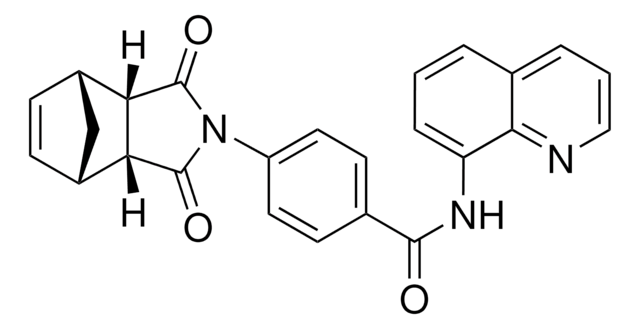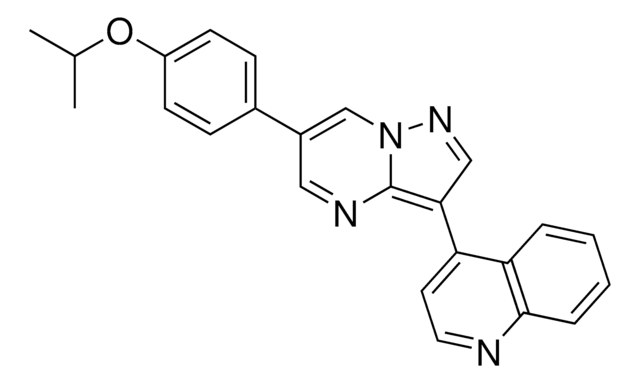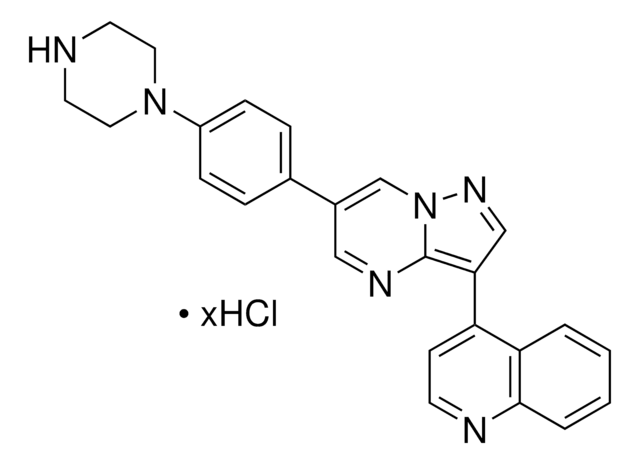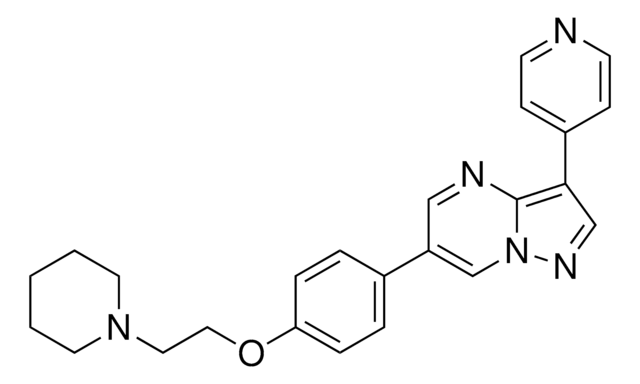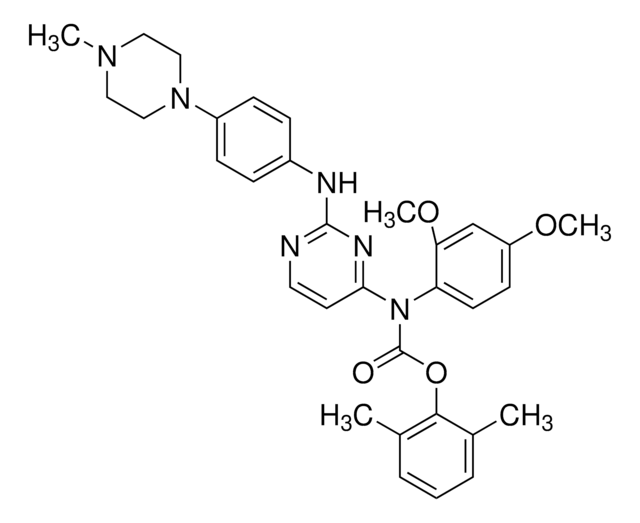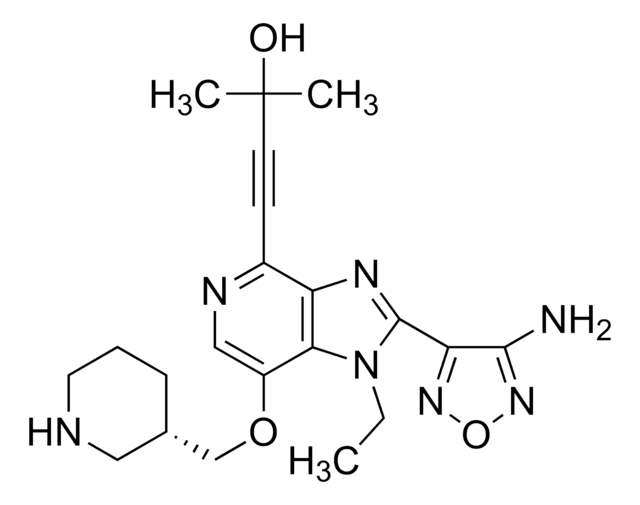SML1307
K02288
>98% (HPLC)
Sinónimos:
3-[(6-Amino-5-(3,4,5-trimethoxyphenyl)-3-pyridinyl]phenol, 3-[6-Amino-5-(3,4,5-trimethoxyphenyl)-3-pyridinyl]-phenol
About This Item
Productos recomendados
Quality Level
assay
>98% (HPLC)
form
powder
color
white to beige
solubility
DMSO: 5 mg/mL, clear (warmed)
storage temp.
2-8°C
SMILES string
NC1=C(C2=CC(OC)=C(OC)C(OC)=C2)C=C(C3=CC=CC(O)=C3)C=N1
InChI
1S/C20H20N2O4/c1-24-17-9-13(10-18(25-2)19(17)26-3)16-8-14(11-22-20(16)21)12-5-4-6-15(23)7-12/h4-11,23H,1-3H3,(H2,21,22)
InChI key
CJLMANFTWLNAKC-UHFFFAOYSA-N
General description
Biochem/physiol Actions
BMP signalling is associated with many important physiological processes. It acts a central regulator of developmental processes such as organogenesis, gastrulation, mesoderm induction and endochondral bone formation. BMP signals are also related to diseases including pulmonary hypertension, juvenile polyposis syndrome, fibrodysplasia ossificans progressiva and hereditary hemorrhagic telangiectasia syndrome. BMP signaling inhibition might serve as a tool to study its role in other biological processes.
signalword
Danger
hcodes
Hazard Classifications
Acute Tox. 3 Oral - Eye Dam. 1
Storage Class
6.1C - Combustible acute toxic Cat.3 / toxic compounds or compounds which causing chronic effects
wgk_germany
WGK 3
flash_point_f
Not applicable
flash_point_c
Not applicable
Elija entre una de las versiones más recientes:
Certificados de análisis (COA)
¿No ve la versión correcta?
Si necesita una versión concreta, puede buscar un certificado específico por el número de lote.
¿Ya tiene este producto?
Encuentre la documentación para los productos que ha comprado recientemente en la Biblioteca de documentos.
Nuestro equipo de científicos tiene experiencia en todas las áreas de investigación: Ciencias de la vida, Ciencia de los materiales, Síntesis química, Cromatografía, Analítica y muchas otras.
Póngase en contacto con el Servicio técnico


